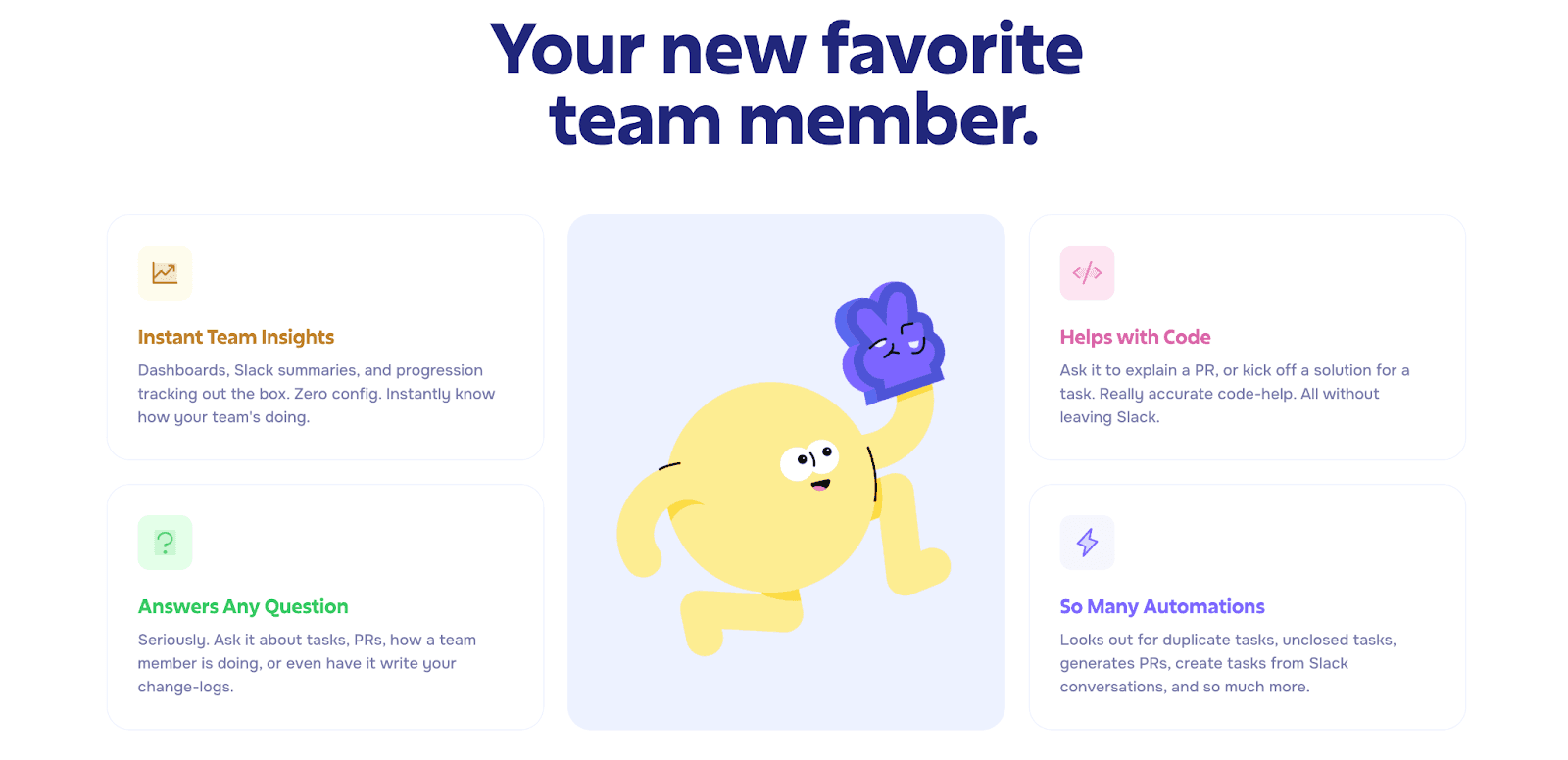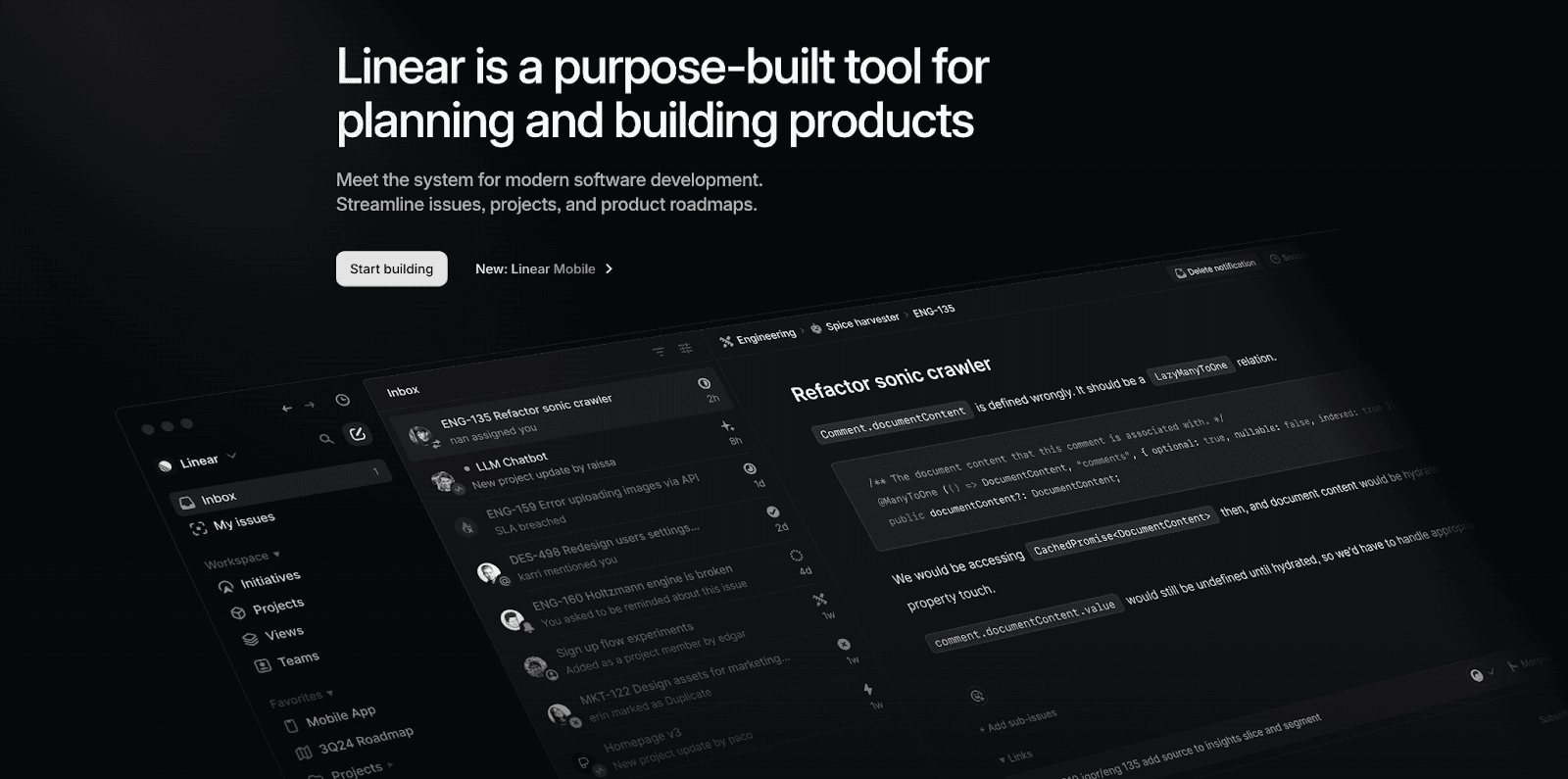Oct 12, 2024
The impact of AI on software development has been profound, to say the least, with over 97% of developers in a recent GitHub survey reporting they have used AI tools in their jobs.
Given AI's transformative effect on software development, it's only natural to consider how it can similarly enhance the management of software teams—a domain that has seen more modest adoption of AI tools.
In this article, we will compare Homie and Linear— two AI-powered project management tools that can elevate the product management experience for project managers and their software teams.
What is Homie?

Homie is an AI-driven project management tool tailored for development teams. Its core functionality revolves around simplifying the management of software projects by automating tasks and providing insights into team progress.
With seamless integration into platforms like Slack, GitHub, GitLab, and Trello, Homie helps teams streamline their workflows, making project management less cumbersome.
Key Features of Homie:
AI-Driven Task Management: Allows users to create, assign, and track tasks through natural language commands within Slack.
Code Insights: Offers automatic generation of pull request (PR) summaries, facilitating a better understanding of code contributions and project status.
Code Assistance: Generates context-specific code snippets to assist developers in quickly fixing bugs or implementing new features within the codebase.
Documentation Generation: Capable of generating documentation, changelogs, and even blog posts directly from code.
Conversation Recall: Remembers Slack discussions, allowing users to reference past conversations and generate documentation from them.
What is Linear?

Linear is a project management tool designed to enhance the speed and efficiency of development teams by allowing them to manage tasks, bugs, and projects seamlessly.
Key Features of Linear:
Task and Issue Tracking: Provides an intuitive way to create, manage, and prioritize tasks and issues within a streamlined interface.
Keyboard Shortcuts: Offers an extensive set of keyboard shortcuts to facilitate fast navigation and task management.
Integrations: Connects easily with popular tools like GitHub, Slack, and Figma, ensuring a cohesive workflow.
Real-time Collaboration: Enables team members to collaborate in real-time, with live updates to tasks and issues.
Let's now take a look at both tools and compare them across their key features, ease of use, pricing, ideal users, security features, and pros and cons.
Comparing Homie and Linear
1. Core Feature Comparison
To evaluate the differences between Homie and Linear, let’s take a closer look at their core features:
2. Ease of Use and Setup
Homie:
Seamlessly integrates with platforms like Slack and GitHub, providing a straightforward setup.
Operates primarily through natural language commands, making it user-friendly for non-technical users.
Integrates into existing management setups.
Linear:
Designed with a clean and minimalistic interface that enhances usability.
Has a more involved setup and onboarding process but integrates with more platforms.
3. Pricing
Homie:
Offers a free plan for up to three contributors and premium options for $15 per month per user for larger teams who need access to advanced features.
Linear:
Linear offers a free trial for up to 2 teams, as well as tiered premium plans, starting at $8/user/month for more teams and features.
Pricing Homie Linear Free Tier Yes, limited features. Yes, limited features. Paid Plans Starts at $15/user/month. Starts at $8/user/month.
4. Ideal Use Cases
Homie:
Best suited for small-medium teams that want to track and improve software delivery with minimal setup.
Teams that already have existing Project Management tools, and do not want to switch.
Flat, self-managing teams that do not have a dedicated Product / Project Manager.
Linear:
Suitable for large teams who have custom automation requirements, and are able to write, and maintain Linear shortcuts.
Teams with layered hierarchy for Engineering, Project Management, and Product Owner.
5. Security Features
6. Pros and Cons
Homie Pros:
Out-the-box insights, and automations.
Allows you to use your existing tooling.
Natural language processing simplifies task management.
Homie Cons:
Fewer integrations than Linear.
Less access control features than Linear.
Linear Pros:
Powerful task management functionality.
Heavily customizable to team requirements.
More integration options.
Linear Cons:
Lacks advanced AI features.
No code/text generation capabilities.
Conclusion
Both Homie and Linear are great project management tools for software development teams, and the choice between them, as always, comes down to your team’s specific needs and focus.
Homie is ideal for small to medium sized teams that would like to gain search, automation, and insight to their teams development immediately, without extra config.
On the other hand, if your team is looking for a completely custom solution to meet specific shortcuts, and automations to replace your existing Project Management tool, Linear is the way to go.

Yusuf
Technical Writer
Let's be homies.
Contact
yo@homie.gg
